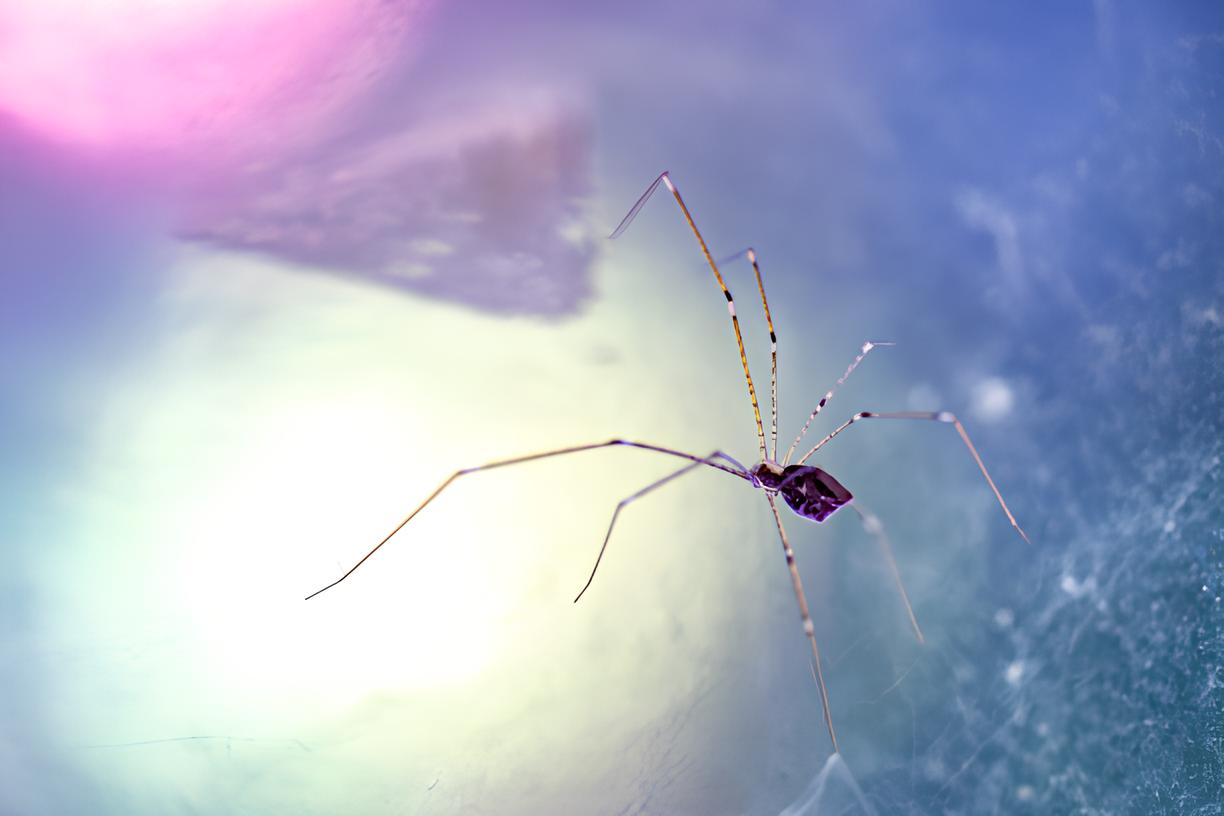As night falls, we often switch on our LED lights to illuminate our surroundings. However, there are instances when you might notice spiders seemingly wandering under the light, causing inconvenience in your daily life. You might start to question, are LED lights attracting these spiders? To answer this question, it's crucial to understand the relationship between spiders and light sources, as it helps comprehend their behavior better. This article will delve into the topic, offering you insights into whether LED lights truly attract spiders.

TABLE OF CONTENTS
Understanding the Relationship Between Spiders and Light Sources
- Spider's light perception
- Brightness of the light source and spider behavior
- Color of the light source and spider behavior
- The need for food guides spiders toward light
- Different types of lights vary in their attraction to insects
Spiders' eyes are different from human eyes, and their perception of light may differ from ours. This might influence their response to different light sources.
The brightness of a light source may influence spiders' response to it. For example, brighter light sources might attract more insects, and therefore more spiders.
Research has shown that lights of different colors can have varying levels of attraction to insects, which can indirectly influence spiders.
Before discussing whether LED lights attract spiders, it is vital to understand the relationship between spiders and light sources. Firstly, spiders are not attracted to the light source itself, but to the insects drawn towards it. Spiders are cunning predators and typically catch their prey in dark environments. However, since lights often attract flying insects, spiders are lured to seek food under the lights.
On the other hand, it's important to understand that different types of light sources have varying attractions to insects. For instance, traditional incandescent lights generally attract more insects, whereas LED lights comparatively attract fewer insects. This means that theoretically, places using LED lights would have a lower likelihood of spider presence.

Characteristics of LED Lights and Comparison With Other Light Sources
- Introducing the energy efficiency and longevity advantages of LED lights
- Detailed explanation of the nature of light produced by LEDs, and why they attract fewer insects
Having understood the relationship between spiders and light sources, let's delve deeper into LED lights compared to other types of lighting. LED lights have numerous advantages, including high energy efficiency and long lifespan. Firstly, LED lights are more energy-efficient than traditional incandescent and fluorescent lights. LEDs have a higher electrical energy conversion efficiency and good heat dissipation,LED lights heat up less, thus producing more light while consuming less power. Additionally, LEDs have a longer lifespan, typically lasting tens of thousands of hours, far surpassing other types of lights.
LED lights, also known as Light Emitting Diodes, often produce what is referred to as 'cool' light. This isn't because the light emitted by LEDs is physically cool, but because LEDs typically have a higher color temperature and longer wavelength, which gives a cool and crisp perception compared to the warm feeling of traditional incandescent lights that emit shorter-wavelength light with a lower color temperature. This characteristic also explains why LED lights attract fewer flying insects. Studies have shown that insects respond differently to light of varying wavelengths. Generally, shorter-wavelength light (i.e., light with a lower color temperature) is more attractive to insects. Therefore, because of their longer-wavelength (higher color temperature) light, LED lights attract fewer insects. Consequently, in environments where LED lights are used, there tends to be a lower probability of encountering spiders.

Considering Other Factors That Might Attract Spiders
- There may be sources of food for spiders at home
- Spiders might be seeking a warm place to evade the cold
Although we have established that LED lights are unlikely to attract spiders, it's important to consider other factors in your home that might. One of the main factors is the presence of food sources. Spiders are predators and require prey to survive. Your home may host various small insects like flies, mosquitoes, and moths that can serve as food for spiders. For instance, if your home is swarming with fruit flies, it may attract spiders. Therefore, maintaining cleanliness in your home and reducing the number of small insects can effectively minimize the presence of spiders.
Besides searching for food sources, spiders might also appear in your home because they are seeking a warm place to avoid the cold. Like many other insects, spiders favor warm and dry conditions. In colder weather or during winter, they may look for a place that provides warmth to avoid the harsh cold outside. Your home provides a warm and sheltered environment, making it an ideal place for spiders. So, if you find spiders in your house, it might not only be due to the presence of their food sources, but also because the environment in your home provides a comfortable habitat for them.

How to Address the Issue of Spiders Under LED Lights
Although LED lights themselves are unlikely to attract spiders, if you still find spiders under LED lights, you can try the following measures to reduce their appearance:
- Maintain cleanliness: Keeping your home clean is one of the most effective measures. Regular cleaning, especially dust and food residues, can reduce the number of small insects, thereby reducing the food sources of spiders.
- Seal entrances: Check your house for possible entrances, such as cracks and holes, and seal them. This can prevent spiders and other insects from entering your home.
- Use insect repellents: There are many insect repellent products on the market that can effectively repel spiders. However, be careful when using any chemical products to avoid adverse effects on humans and pets.
- Adjust the light source: Although LED lights have a relatively small attraction to insects, if possible, you can consider changing the light source to a light that attracts fewer insects.
- Avoid outdoor lights shining indoors: Light can attract insects, which in turn attract spiders. Avoiding outdoor lights shining directly indoors may help reduce the number of spiders.
- Regularly change curtains and sheets: Curtains and sheets are places where spiders like to hide. Regularly changing and washing these items can help reduce the appearance of spiders.
- Seek professional help: If the spider problem is severe, you may need to seek professional pest control services.

Conclusion
Through the discussion of the relationship between LED lights and spiders, we can draw a conclusion: LED lights are unlikely to directly attract spiders. This is because the light emitted by LED lights has a longer wavelength and a higher color temperature, which has a weaker attraction to small insects such as flying insects, thereby reducing the food sources of spiders. However, if spiders still appear in your home, it may be due to other factors, such as the presence of other types of food sources, or your home provides a suitable environment for spiders. Therefore, to effectively reduce the presence of spiders at home, various factors need to be considered, and corresponding measures should be taken, such as maintaining cleanliness, sealing entrances, using insect repellents, or seeking professional help.




Share:
Do LED Lights Get Hot? Unraveling Their Operating Mechanism
Why Are Dimmer Switches So Expensive? An Insider’s Look